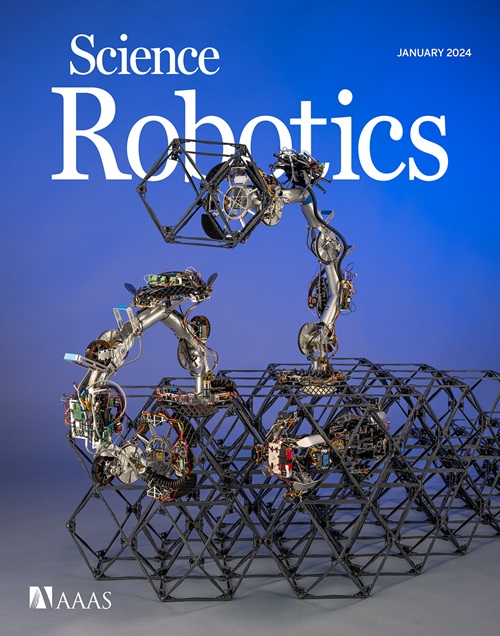Robust flight navigation out of distribution with liquid neural networks
IF 27.5
1区 计算机科学
Q1 ROBOTICS
引用次数: 3
Abstract
Autonomous robots can learn to perform visual navigation tasks from offline human demonstrations and generalize well to online and unseen scenarios within the same environment they have been trained on. It is challenging for these agents to take a step further and robustly generalize to new environments with drastic scenery changes that they have never encountered. Here, we present a method to create robust flight navigation agents that successfully perform vision-based fly-to-target tasks beyond their training environment under drastic distribution shifts. To this end, we designed an imitation learning framework using liquid neural networks, a brain-inspired class of continuous-time neural models that are causal and adapt to changing conditions. We observed that liquid agents learn to distill the task they are given from visual inputs and drop irrelevant features. Thus, their learned navigation skills transferred to new environments. When compared with several other state-of-the-art deep agents, experiments showed that this level of robustness in decision-making is exclusive to liquid networks, both in their differential equation and closed-form representations.
利用液体神经网络实现分布式稳健飞行导航
自主机器人可以从离线的人类演示中学会执行视觉导航任务,并能很好地泛化到在同一环境中接受过训练的在线和未见过的场景中。要让这些代理更进一步,在它们从未遇到过的场景发生剧烈变化的新环境中实现稳健泛化,则具有挑战性。在此,我们提出了一种方法,用于创建稳健的飞行导航代理,使其能够在剧烈的分布变化环境下,在训练环境之外成功执行基于视觉的飞向目标任务。为此,我们设计了一个使用液体神经网络的模仿学习框架,这是一类受大脑启发的连续时间神经模型,具有因果关系并能适应不断变化的条件。我们观察到,液态代理学会了从视觉输入中提炼出它们被赋予的任务,并放弃无关的特征。因此,它们学到的导航技能可以转移到新的环境中。与其他几种最先进的深度代理相比,实验表明,无论是在微分方程还是闭式表示中,这种决策稳健性水平都是液体网络所独有的。
本文章由计算机程序翻译,如有差异,请以英文原文为准。
求助全文
约1分钟内获得全文
求助全文
来源期刊

Science Robotics
Mathematics-Control and Optimization
CiteScore
30.60
自引率
2.80%
发文量
83
期刊介绍:
Science Robotics publishes original, peer-reviewed, science- or engineering-based research articles that advance the field of robotics. The journal also features editor-commissioned Reviews. An international team of academic editors holds Science Robotics articles to the same high-quality standard that is the hallmark of the Science family of journals.
Sub-topics include: actuators, advanced materials, artificial Intelligence, autonomous vehicles, bio-inspired design, exoskeletons, fabrication, field robotics, human-robot interaction, humanoids, industrial robotics, kinematics, machine learning, material science, medical technology, motion planning and control, micro- and nano-robotics, multi-robot control, sensors, service robotics, social and ethical issues, soft robotics, and space, planetary and undersea exploration.
 求助内容:
求助内容: 应助结果提醒方式:
应助结果提醒方式:


